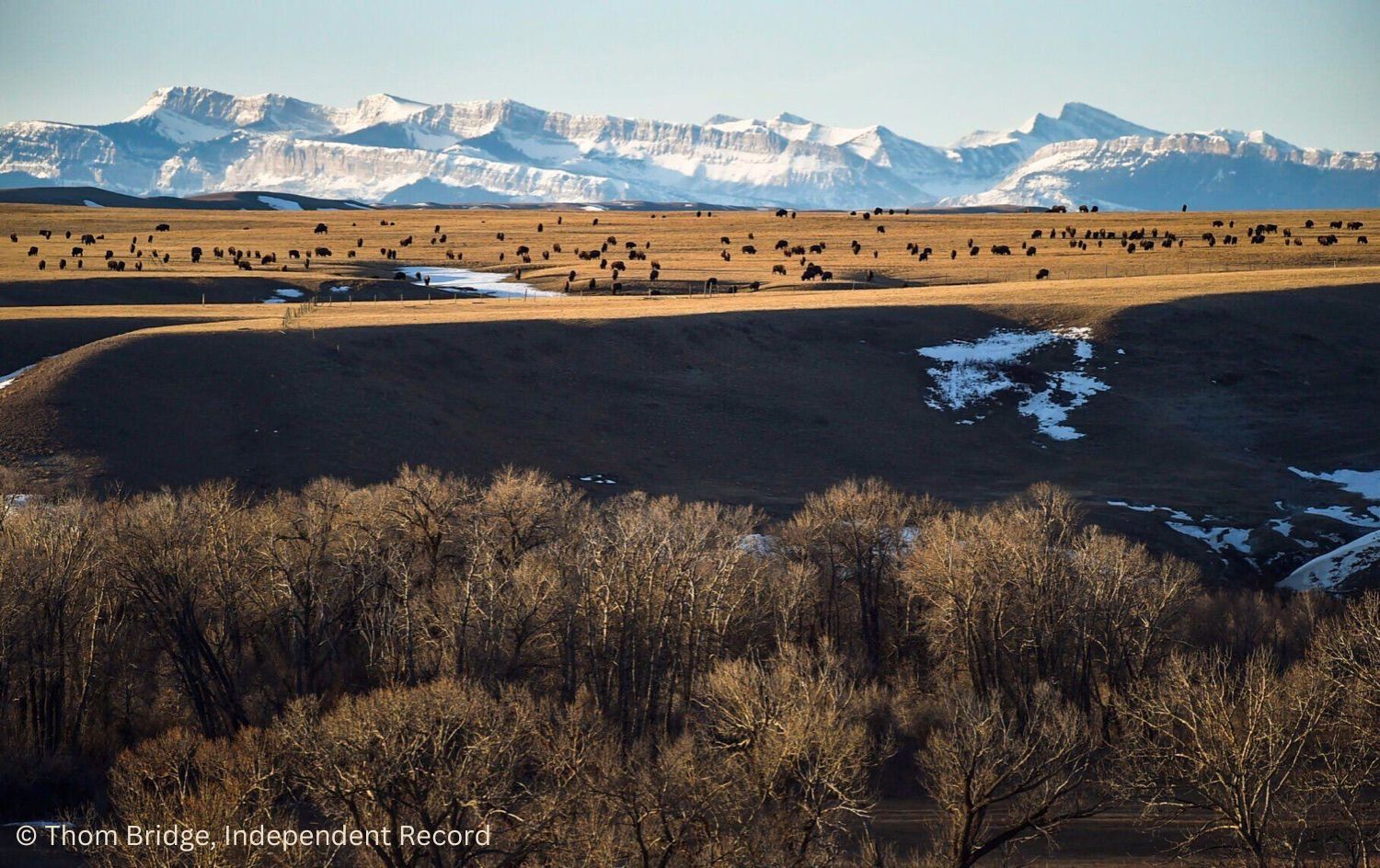Interior Department Announces Significant Action to Restore Bison Populations as Part of New Restoration and Resilience Framework

Bison from the Blackfeet Buffalo Program graze on their winter range along the Two Medicine River. The tribe has about 700 bison in the herd, and this year they harvested about 20 to distribute across the community.
Photo by THOM BRIDGE, Independent Record
(From Interior Dept. Press Release)
WASHINGTON – The Department of the Interior today announced several new steps to restore wild and healthy populations of American bison and the prairie grassland ecosystem. Through a new Secretary’s Order and over $25 million from the Inflation Reduction Act, the Department will empower its bureaus and partners to use the best available science and Indigenous Knowledge to help restore bison across the country.
“The American bison is inextricably intertwined with Indigenous culture, grassland ecology and American history. While the overall recovery of bison over the last 130 years is a conservation success story, significant work remains to not only ensure that bison will remain a viable species but also to restore grassland ecosystems, strengthen rural economies dependent on grassland health and provide for the return of bison to Tribally owned and ancestral lands,” said Secretary Deb Haaland. “New historic funding from the Inflation Reduction Act will help support the Department’s efforts to restore this iconic species and integrate Indigenous Knowledge into our shared stewardship goals.”
The persecution of bison contributed to the decline of healthy grassland ecosystems and, eventually, to the Dust Bowl in the 1930s. The loss of the keystone species, coupled with land conversion, led to declines of other important grassland wildlife, such as migratory birds and pollinators. Bison remain functionally extinct to both grassland systems and the human cultures with which they coevolved.
The new Interior initiative will help advance bison restoration efforts to grasslands, which can enhance soil development, restore native plants and wildlife, and promote carbon sequestration, providing benefits for agriculture, outdoor recreation, and Tribes. Central to the development of this new plan will be robust engagement with Tribes, including prioritizing Tribally led opportunities to establish new large herds owned or managed by Tribes and Tribally led organizations.
The Department and its bureaus are committing over $25 million from the Inflation Reduction Act to promote bison conservation. This funding will go toward a variety of projects and initiatives, including establishing new bison herds, supporting bison transfers to Tribes, and entering into co-stewardship agreements with Tribes for bison management.
Of course, there is a big difference between domesticated bison, 'beefalo" and Yellowstone's wild bison. As important as it is to get buffalo back onto prairie grasslands, it is imperative as well to stop needlessly slaughtering Yellowstone bison every year out of slavish fealty to Montana's livestock industry. While for political reasons they continue to pretend that brucellosis is some kind of intractable problem with reintroduction of Yellowstone bison to the larger ecosystem that surrounds Yellowstone National Park, in fact everyone knows that the real issues is access to public lands grazing.
Without federally subsidized grazing on public lands (aka welfare ranching), market forces would not favor raising cattle on the drought-stricken arid- and semi-arid lands of the Rocky Mountain West. Meanwhile, according to climate scientists, emissions from meat, dairy and rice production will by themselves break the key international target of 1.5C if left unchecked. If we need to cut back dramatically on the 1.5 Billion cows in the world -- and we do -- what better place to begin than by eliminating subsidies on public wildlands that have been greatly despoiled by private cows that are best suited to temperate and humid climate zones like Wisconsin, Maine, and Mississippi?
